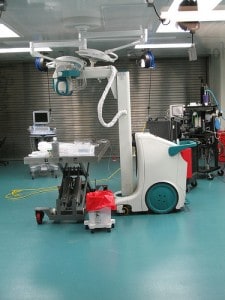
Brookdale Hospital – A Culture Of Unsafe Medical Practice
As New Yorkers, we often think we have the best and most advanced healthcare options in the world, and in many ways that is true.
Home » Patient Safety Blog » Medical Device Clocks: A Digital Time Bomb?
Whether the necessary medical intervention involves a timely administration of medication, the performance of an emergency cesarean section, or the intubation of a newborn baby who has breathing problems, literally seconds count.
We all hope that anyone even remotely involved in our medical care, from doctors and nurses to medical device makers and drug manufacturers, agrees that patient safety is their number one priority.

A large portion of patient safety – and the prevention of repeated acts of medical malpractice – depends upon the ability to identify mistakes and make the necessary changes to avoid those same mistakes in the future.
Increasingly, medical malpractice happens because doctors and hospitals are failing in this regard.
For example, I recently came across a report in one of my current favorite publications The Economist that I found troubling because it involves an issue that most of us might never even think about in terms of medical malpractice – bad clocks.
It seems like everything in our world today has some kind of computer chip built into it.
Most of us either have a smart phone or tablet that now enables us to track the location of the device over the internet if it is misplaced.
The ability of electronic devices to automatically send and receive data is no exception when it comes to medical devices.
In most American hospitals, hundreds of medical devices are able to send data to an electronic medical record (EMR) databank.
The EMR is a repository of pertinent medical information that can be accessed instantly by doctors over their hospital’s computer network, or even from a remote location.
This can be very helpful.
But as we are learning, it is a double-edged sword since any disparities or inconsistencies in the EMR, even with something like time, can lead to catastrophic results.
Dr. Julian Goldman is an anesthesiologist at Massachusetts General Hospital.
One day while in surgery he noticed a troubling problem:
The EMR noted him checking the level of a blood-thinning medication in an urgent neurological surgery eight minutes earlier than he actually did.
Timing in this setting is important because coagulation levels must be checked at appropriate intervals to prevent injury to the patient.
If blood is overly anti-coagulated (thinned), the patient can bleed to death from an internal hemorrhage.
On the other hand, if the blood isn’t thinned enough, a blood clot might develop that could result in a fatal pulmonary embolism.
The reason for the discrepancy in this case was because the internal clock on Dr. Goldman’s digital coagulation monitor was eight minutes slow.
Had another doctor come in, he or she would likely have looked at the EMT and assumed the medication was acting swiftly and reduced the dosage.
That assumption could have lead to a life threatening complications for the patient, including death.
Dr. Goldman realized that this was not an isolated incident and that it must happen all the time, across many hospitals.
To examine the problem he received a grant to perform a comprehensive survey of four of the best hospitals in his area.
He looked at devices such as medical monitors, heart-lung machines, pumps used to deliver drugs, and ventilators that allow patients to breathe.
The clocks on these devices were then compared to a cell phone clock set with the official US time.
Dr. Goldman presented his report at CPS Week this past April in Beijing.
The conclusions were startling.
During this study Dr. Goldman checked over 1,700 medical devices and found that one in five (20%) had a timing error of more than half an hour.
Further, the average time discrepancy for all medical devices reviewed was 24 minutes.
You don’t have to be medical malpractice lawyer to understand that 24 minutes can make a huge difference in treatment outcomes – and be the difference between life and death.
Dr. Goldman also looked at what happens to the faulty data that is being automatically generated by medical devices.
He found that EMR’s are designed to automatically reject obviously untimely data.
As a result, the doctor discovered that occasionally the ill-timed event was simply never reported in the EMR at all.
At other times it was buried somewhere in the record under the incorrect time, making it difficult to track.
Finally, he discovered that the EMR might record it after the patient leaves and a new patient has arrived for treatment.
Dr. Goldman says there is a simple solution to this problem.
Medical devices should be plugged into something like the National Time Protocol (NTP), which is what keeps our cell phones and computers on the correct time.
The NTP regulates time according to the nation’s most accurate atomic clocks that orbit the earth and sends information via GPS.
But, the FDA has yet to mandate that medical devices have the capability to tap into the NTP.
As Dr. Goldman points out, this might be one cost that medical device makers just simply have to bear.
Fortunately, the United States Department of Health has already suggested implementation of this standard by 2014, but seems to have not gone as far as mandating that it be done for all medical devices.
No matter what, this issue represents another example of why patient safety must take priority over all else, including the profits of medical device manufacturers.
Here, at The DiPietro Law Firm, we’re committed to helping victims of sexual abuse and assault find the justice they deserve.
All information discussed during our consultations always remains completely 100% confidential.
Would you like our help?
Founder Anthony T. DiPietro, Esq. is a compassionate and skilled trial attorney who has completely dedicated the past 23 years of his career to litigating medical malpractice and sexual abuse cases against major corporate institutions including hospitals, medical clinics, schools, and other wrongdoers.
Mr. DiPietro has also obtained some of New York State’s highest verdicts and settlements, and has been selected to New York State Super Lawyers® each year, for the past 10 years in a row.
In 2022, Mr. DiPietro was selected as one of America’s Top 100 High-Stakes Litigators for the landmark cases he’s won on behalf of survivors of sexual exploitation and abuse.
Here, at The DiPietro Law Firm, we’re committed to helping victims of sexual abuse and assault find the justice they deserve.
All information discussed during our consultations always remains completely 100% confidential.
Would you like our help?

As New Yorkers, we often think we have the best and most advanced healthcare options in the world, and in many ways that is true.

Perhaps the most satisfying part of being a New York medical malpractice lawyer is the gratification of seeing justice served when a patient has been grievously harmed
Years of Abuse: 1987 – 2016
Brief:
Robert Hadden, a disgraced Obstetrician-Gynecologist (OB/GYN) who worked for Columbia University and NewYork-Presbyterian Hospital, was criminally convicted in 2016 of sexually exploiting and abusing patients under the guise of medical care.
Hadden used his position of authority and trust to sexually exploit women and girls for nearly three decades as a Columbia University physician.
All the while, Columbia University and New York-Presbyterian Hospital administrators turned their backs and ignored reports of Hadden’s abuse, gaslighting patients and the public.
Read More:
Years of Abuse: 1979 – 2022
Brief:
David H. Broadbent is a former OB/GYN under criminal investigation and facing civil lawsuits for sexual abuse of patients.
Broadent worked at multiple medical facilities in the Provo, Orem and Salt Lake City, UT areas.
These facilities included Intermountain Healthcare’s Utah Valley Hospital, MountainStar Healthcare’s Timpanogos Hospital, other Utah health care providers, and he also had adverse action taken against his medical license back in 1990.
Read More:
Years of Abuse: 1990 – 2016
Read More: University of Southern California & Predator George Tyndall
Years of Abuse: 1961 – 1996
Brief:
22 predator teachers and administrators, over the course of 35 years.
Years of Abuse: 1960 – 1982
If you have any questions about whether or not you have a case, or just want to obtain more information about what you’ve experienced – feel free to contact us through our secure website chat.
You can also contact us by calling us at (212) 233-3600 or toll free at (800) 215-1003.
All of our consultations are free and 100% confidential. Thank you.